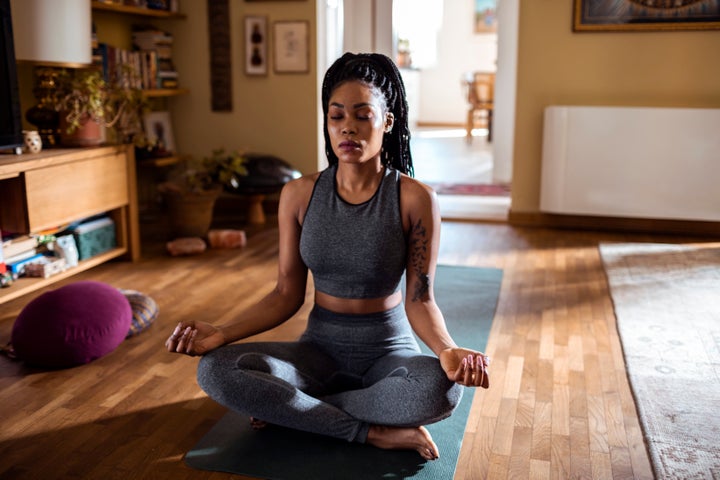
We have now reached, if you can believe it, the eight month mark into the flailing mess of the COVID-19 pandemic, which is probably (read: certainly) far longer than any of us imagined it might take for this to end.
And the past eight months has certainly been bruised by a pattern of indeterminate peaks and valleys — moments when one feels hopeful, optimistic, all right, and others when one feels frustrated, anxious, and defeated.
Personally, I’ve felt pretty awful lately. In disposition, I’m experiencing a valley not unlike the one I felt near the beginning of the pandemic, one characterized by lethargy, tenseness, and dread. I’m sure many others have felt this way of late, too: John Trainor, chair of Mental Health Research Canada’s board, recently said a new survey produced “deep concerns about the trends we are seeing” for mental health among Canadians. (Reader: things will get better, eventually.)
It’s difficult to say for sure why people are feeling this way right now, so far into this thing as we are. Maybe it’s the promise of an encroaching winter, during which the freedoms and coping mechanisms we previously enjoyed won’t work the same way under the conditions of the inclement weather.
Who knows. What we do know, and what we’ve always known, is that it’s paramount that we all tend to our mental health constantly, and that we do what we can to get ourselves — and each other — through this thing in one piece.
Watch: This clinical psychologist makes illustrations to help you look after your mental health. Story continues below.
“Self-care isn’t just doing things to make us feel better in the moment,” Dr. Melanie Badali, a psychologist who works in Cognitive Behaviour Therapy, told HuffPost Canada. “It’s the practice of taking an active role in protecting one’s well being. It means taking care of ourselves like we would take care of someone we love and taking care of ourselves when it is hard. It also includes getting professional health-care help when we need it.”
So to figure out how to do all that, to learn better ways we can protect our mental health every day, we spoke to a somatic practitioner, two psychotherapists and a psychologist. Below is a shortlist of their suggestions.
Meditating
By this point, however many years after the word “mindfulness” began to dominate a certain segment of the cultural conversation, it’s difficult to refute that meditation is one of the most powerful tools at our disposal to reduce anxiety and produce a sense of peace and balance.
“It’s good to think of meditation as a gym for your brain,” Dr. Krystina Patton, a psychotherapist who specializes in integrative mental health treatment, told HuffPost Canada. “If you think of your brain as a muscle that you use in literally everything you do, it’s good to spend a little time working on it every day.”
In 2014, 47 studies analyzed in JAMA Internal Medicine, a peer-reviewed medical journal published by the American Medical Association, found that mindfulness meditation, even for 15 minutes a day, does help to manage anxiety, depression and pain among practitioners.

“It gives us the ability to see our thoughts more clearly and to have more agency over our emotional states, rather than being hijacked by them,” said Patton.
Sitting comfortably and focusing on your breathing, in an attempt to turn your mind’s attention to the present rather than allowing it to wade out into the distant past or unclear future — an easy way for anxiety to flourish — can help to ease the psychological stresses endemic to this moment.
Box breathing
You know how when, in times of crisis, your friends sometimes need to remind you to breathe? It isn’t a fluke that actually doing so, consciously, makes you feel a little bit better.
A number of studies have found that deep, diaphragmatic breathing can trigger the body’s relaxation responses, relieving stress and helping you to concentrate better.
Enter box breathing, also called “square breathing,” a relatively new technique that you can use anywhere, at any time. It only takes a minute or two, and it’s easy to practice: relax your body, exhale to a count of four, hold your lungs empty for a count of four, inhale for a count of four, then keep your lungs full for a count of four. Then repeat.
In stressful situations — a global pandemic, for example — we often unwittingly resort to chest breathing, which, according to the Mayo Clinic, can lead to muscle tightness and headaches, symptoms which are further magnified by chronic stress. Breathing in this way can help to ease the body.
“The thing with stress is that it’s meant to be short-term,” Karishma Kripalani, a somatic practitioner who works with emotional and mental health concerns, told HuffPost Canada. “But if that stress cycle can’t complete itself, then it becomes chronic stress, which is, I think, what we’re seeing right now. And that can take a toll.”
Acknowledging your feelings and talking about them
Feelings are always with us, yet we aren’t always too good at naming or talking about them.
“We tend not to do a great job of dealing with difficult emotions,” said Patton. “Even with our kids, we socialize them from such a young age to get away from, or push away, difficult feelings — when they cry, for example, we immediately try to get them to stop. But you can’t always immediately fix or move past how you’re feeling.”
That’s not to say that we should just “cry it out,” Patton says — or allow our children to — but that in immediately trying to fix things, we reify the implicit message that challenging feelings are something to be escaped or avoided, which might set us up for struggles when we encounter those things that cannot be avoided.

Patton, Kripalani and Gabrielle Stannus, a registered psychotherapist whose practice is grounded in gestalt, all agree that taking a moment to acknowledge how you’re feeling and talking about it with others can help to make sense of these emotions and offer a sense of peace and clarity.
“When you have conversations about how you’re feeling, rather than harbouring your emotions secretly, you’re actually letting the anxiety out of you, and confronting those difficult emotions,” said Stannus.
Establishing clear work-life boundaries
Many of us have needed to convert our bedrooms, or other spots around our homes, into offices. Here’s the thing: when there isn’t a clear separation between a workspace and a non-workspace, it’s a lot easier for your work to bleed into your personal life.
In this way, working from home can become a double-edged sword, and it’s critical to ensure our work doesn’t negatively impact and disrupt our social lives. Research has found that these intrusions can produce a source of significant weekly strain, from increased stress levels to negative affect, rumination and insomnia.

“I’m a really big fan of creating a container for ourselves and our experience — with so much that’s beyond our control right now, it’s good to have some sense of internal control,” said Kripalani. “The body likes routine and ritual. Predictability can help with a sense of safety.”
Setting boundaries and resisting the impulse or demand to be available at all times is an important part of managing the work-life relationship. That includes making time, even while you’re working, to take breaks and go outside, eat healthy foods, and drink lots of water.
Freewriting
You don’t have to identify as a “writer” in order for writing, no matter what form, to make you feel better.
In fact, studies have found that expressive writing — the practice of writing about thoughts and feelings that are born from traumatic or stressful life experiences — can help some people to manage and navigate the emotional fallout of those experiences.
“Freewriting, or stream of consciousness writing, can help us to organize and structure our thoughts, to present them in a way that seems to really help us let go of them, rather than to ruminate and create a cycle of feeling bad,” said Patton.

Dr. James W. Pennebaker, chair of the psychology department at the University of Texas, Austin, has conducted a large portion of the research on health benefits of expressive writing. And what he’s found is that it can help people to overcome emotional inhibition, easing stress and trauma.
With freewriting, the rules are simple. You’re meant to clear your mind as best you can, and to forget all the rules you know concerning grammar. Then, you set a time limit — between 10 and 20 minutes for beginners — and begin to write out whatever is on your mind.
Finding moments of joy, or gratitude practices
“One thing I’ve done myself, and which a lot of my clients like, is trying to find moments of joy,” said Stannus. “So being able to be present in the moment and looking for things, even small things, that make you smile, then finding ways to integrate that into yourself.”
The trick, Stannus says, is doing this in small ways that will eventually add up: noticing the colour of the leaves in the fall, sharing a laugh with a close friend, hearing a piece of music that makes you smile.
It’s a mindfulness technique that asks you to engage all five of your senses in order to bring yourself firmly into the moment and appreciate what’s in front of you, rather than indulge your anxieties about the indeterminate future.
“Our brains have been designed to keep us alive, not to keep us happy,” said Patton. “And what that means is that our brains can be kind of like Velcro for negative experiences and Teflon for positive ones, because it’s safer to mistake a stick for a snake than a snake for a stick. So if joy is what we want, it’s something we have to cultivate.”
Also on HuffPost: COVID-19 may lead to mental health disorders.